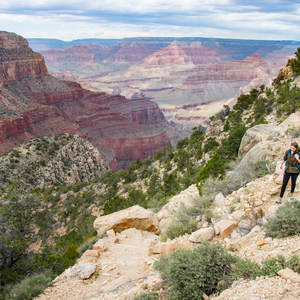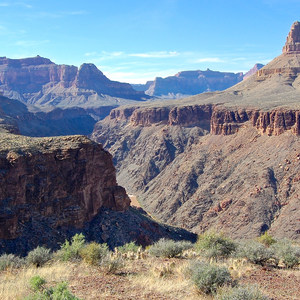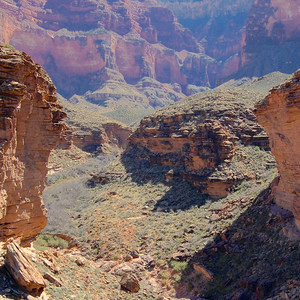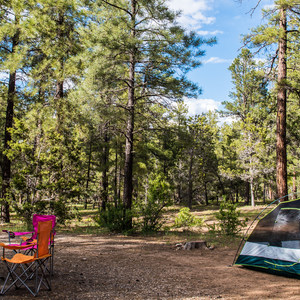The Hermit Loop is a captivating 68-mile backpacking journey that unfolds across the diverse and untamed scenery of the western reaches of Grand Canyon National Park. Starting at Hermits Rest Trailhead, this extensive loop weaves through the park by linking the Tonto Trail and South Bass Trail, providing an immersive experience of the canyon’s majestic geology, rich history, and pristine wilderness. It features both singletrack paths and remote dirt road trails to complete the circuit.
Recommended for seasoned backpackers, this strenuous trek demands thorough preparedness, including diligent research to locate reliable water sources and careful planning on the amount of water to carry. The trail traverses a variety of landscapes, from sharp descents into the canyon to traversing the flat tops of mesas, each step offering breathtaking vistas and a solitude that is increasingly rare.
Typically traversed in a counter-clockwise direction, the route can be adapted to suit individual preferences and can also start from South Bass Trailhead, though Hermits Rest is more easily accessible by vehicle.
TRAIL NAMES AND MILEAGES
-
Tonto Trail: 34.1 miles
-
South Bass Trail: 4.7 miles
-
South Bass Trail Road: 3.7 miles
-
Boundary Road Trail: 14.1 miles
-
Waldron Trail Access: 1.3 miles
-
Waldron Trail: 2.6 miles
-
Return on Hermit Trail: 1.4 miles
FLORA AND FAUNA
Hikers can expect to see a variety of plant life, including cacti, agaves, and wildflowers, alongside fauna such as lizards, frogs, mule deer, bighorn sheep, and an array of bird species.
CAMPING AND WATER SOURCES
Dispersed camping is permitted with a backcountry permit, and hikers must adhere to Leave No Trace principles to protect the delicate desert environment. Water sources are scarce and vary seasonally; therefore, carrying sufficient water and a means to purify any found water is crucial. For more information about seasonal springs and streams, visit the Grand Canyon Backcountry Information Center at: https://www.nps.gov/places/000/backcountry-information-center.htm.
PARKING AND PERMITS
A backcountry permit from Grand Canyon National Park is essential for overnight camping along the route. Additionally, access to the South Bass Trailhead requires a permit from the Havasupai Tribe. For information regarding parking, fees, and backcountry permits, please refer to the Grand Canyon National Park.
SAFETY AND CONSIDERATIONS
-
Part of this route crosses Havasupai Indian Reservation lands, and a fee may be required. For more information, please visit: Havasupai Indian Reservation.
-
-
The isolation of this route demands thorough preparation and self-sufficiency. Hikers should be prepared for changing weather conditions, navigate challenging terrain, and be equipped with detailed maps, a compass, or GPS.
ADDITIONAL INFORMATION
South Bass Trailhead
Hermit Trail























Comments
Sign In and share them.